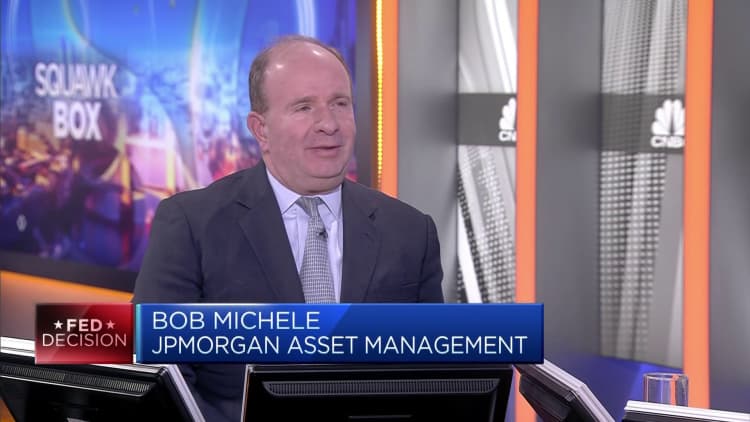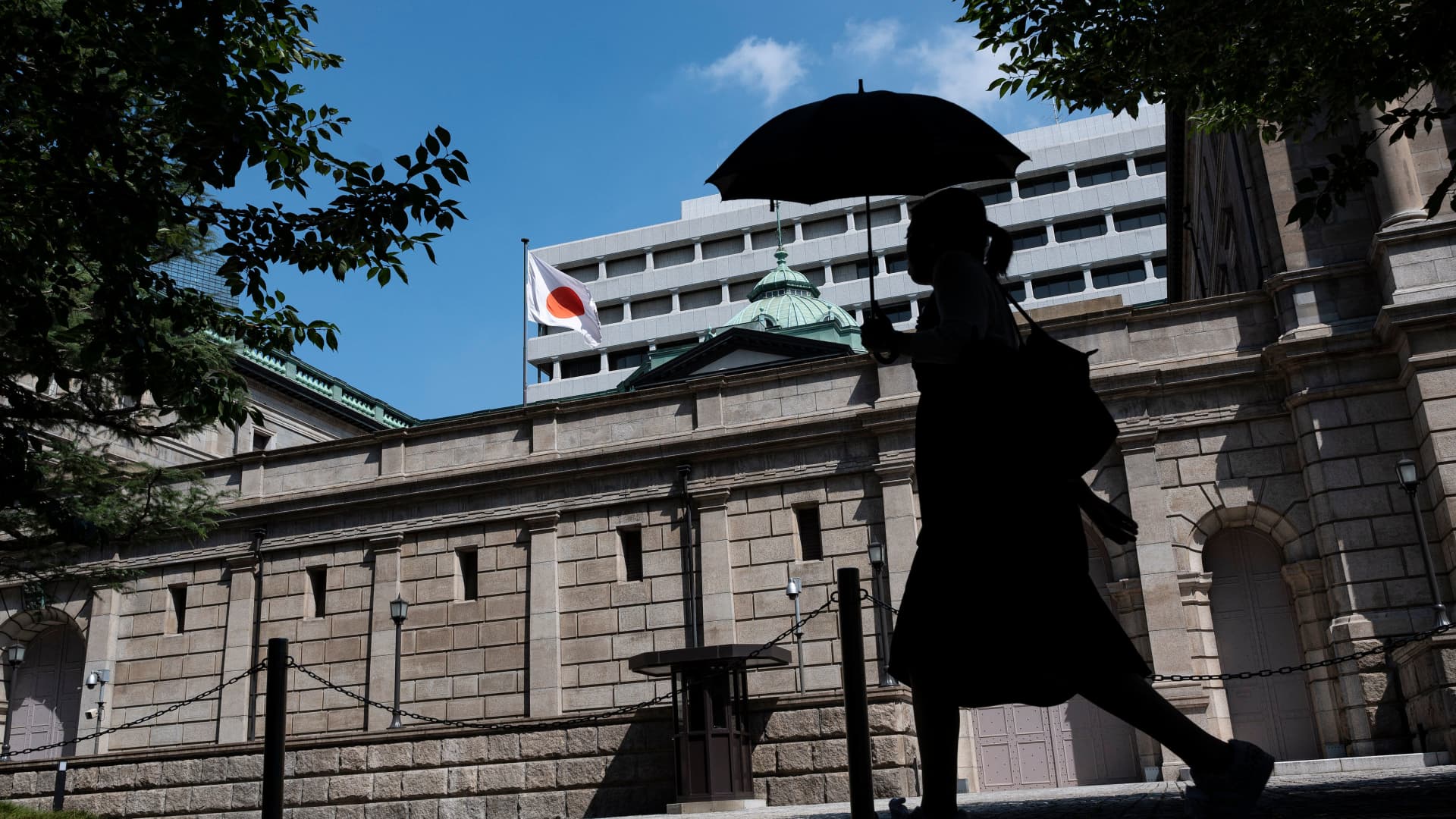A pedestrian walks past the Bank of Japan (BoJ) building in central Tokyo on July 28, 2023.
Richard A. Brooks | Afp | Getty Images
The Bank of Japan announced it’s increasing its bond purchases at Wednesday’s auction, as a spike in government bond yields tests its resolve to defend its yield curve control policy.
In a statement Monday, the Japanese central bank said it will conduct an unspecified amount of additional purchases of Japanese government bonds with tenures of more than five years and up to 10 years. This adds to the BOJ’s reported 300 billion yen ($2 billion) Friday bond purchase with similar maturities.
Yields on 10-year Japanese government bonds hit as much as 0.775% on Monday, their highest since September 2013 and nearing the BOJ’s hard 1% cap. The yen shed nearly 0.3% to about 149.73 yen against the dollar, nearing the 150 yen level that prompted BOJ intervention last year.
Hawkish comments in the minutes of a lively BOJ September policy meeting released earlier Monday reignited expectations the central bank is slowly laying the groundwork for the end to negative interest rates.
At its policy meeting in July, the BOJ loosened its yield curve control to allow longer-term rates to move more in tandem with rising inflation in Governor Kazuo Ueda’s first policy change since assuming office in April.
The move to broaden the permissible range for 10-year JGB yields from plus and minus 0.5 percentage point around its 0% target to 1 percentage point was seen as the start of a gradual departure from the yield curve control policy enacted by Ueda’s predecessor.
The yield curve control, known also as the YCC, is a policy tool where the central bank targets an interest rate, and then buys and sells bonds as necessary to achieve that target. It’s part of the BOJ’s ultra-loose monetary policy, which also includes keeping short-term interest rates at -0.1% in its attempts to combat decades of deflation in the world’s third-largest economy.
Repatriation risks
On Monday, a comment by an unnamed policymaker in the September BOJ meeting minutes that “the achievement of 2 percent inflation in a sustainable and stable manner seems to have clearly come in sight” partly added to the yield spike.
At the September meeting though, the BOJ eventually decided to maintain its ultra-loose policy and left rates unchanged on Sept. 22, mindful of the “extremely high uncertainties” on the growth outlook domestically and globally.

Despite core inflation exceeding the central bank’s stated 2% target for 17 consecutive months, BOJ officials have been cautious about exiting its radical stimulus.
This is due to what the BOJ sees as a lack of sustainable inflation, deriving from meaningful wage growth that it believes would lead to a positive chain effect supporting household consumption and economic growth.
Still, the Bank of Japan could be forced into hiking rates sooner than expected if the yen weakens beyond 150 against the dollar, according to Bob Michele, global head of fixed income at JPMorgan Asset Management.
Higher rates could then unwind the yen carry trade and spark a return of Japanese capital to its domestic bond markets, a move that could trigger market volatility, he told CNBC last Thursday.
Correction: At the September meeting, the BOJ eventually decided to maintain its ultra-loose policy and left rates unchanged on Sept. 22. An earlier version misstated the day.

